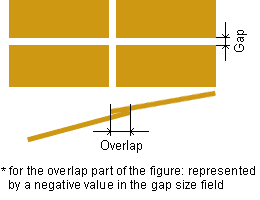Tile Calculator
(Length × Width) ÷ (Tile Length × Tile Width)
Example:
Length = 20 m, Width = 15 m, Tile = 12×12 cm
Tiles = (20 × 15) ÷ (0.12 × 0.12) = 41,667 tiles
(Total Area ÷ (Tile Length × Tile Width))
Example:
Total Area = 300 m², Tile = 12×12 cm
Tiles = (300 ÷ 0.0144) = 20,833 tiles
Why Tile Gaps Are Important
When installing wall or floor tiles, it’s essential to leave space between each one. Although tiles might look identical, they often vary slightly in size or shape, making tight placement impractical. These spaces—commonly known as grout lines—are filled with grout, a concrete-like material that stabilizes the tiles and helps seal out moisture.
Typical tile gaps range from 1/16 inch to 1/2 inch, depending on the tile type, material, and overall design. For a cleaner look with smaller gaps, rectified tiles—precision-cut to uniform sizes—are a great choice, though they tend to cost more. Tiles like granite, which are naturally more uniform, also work well with minimal spacing and can reduce grout visibility.
In some applications, like roof tiles or wood siding, tiles overlap instead of having gaps. This overlapping technique helps prevent water penetration. The tile calculator supports both scenarios:
Enter a positive number to include a gap between tiles.
Use a negative number if the tiles will overlap.

Tile Size and Installation Considerations
Tile sizes range from tiny mosaics (as small as 3/8″) to oversized slabs (up to 24″ × 48″). Square tiles are the most popular because they’re easy to work with and widely available. While shapes like squares and rectangles are common, more artistic options exist, though they may require more effort to install.
Larger tiles can make a room look more open and modern by reducing the number of visible grout lines. However, they may lead to more cutting waste. Smaller tiles, on the other hand, are better for adding texture and detail, especially in intricate or decorative areas.
Types of Tile Materials
Tiles come in various materials, each with its own benefits:
Ceramic & Porcelain: Affordable, durable, and available in many styles—ideal for most residential uses.
Glass Tiles: Best suited for backsplashes and accent walls, not recommended for floors due to fragility.
Quarry Tiles: Textured and slip-resistant, making them perfect for outdoor areas or commercial kitchens.
Natural Stone (Marble, Granite, etc.): Offers one-of-a-kind patterns and colors, giving spaces a luxurious and natural look. These tiles often blend beautifully with grout for a seamless finish.
Popular Tile Layout Patterns
Tile layout plays a big role in the final look of a space. Here are some common patterns:
Straight (Grid) Layout: Simple and classic—perfect for square or rectangular tiles.
Diagonal or Diamond Layout: Adds a sense of movement and visual interest.
Running Bond (Brick Pattern): Features staggered rows, typically using a 2:1 ratio. It offers a timeless look but usually requires around 10% more material.
Herringbone Pattern: Tiles are placed in V-shaped patterns at 45° or 90°. This stylish option uses more material but creates a bold, dynamic effect.
